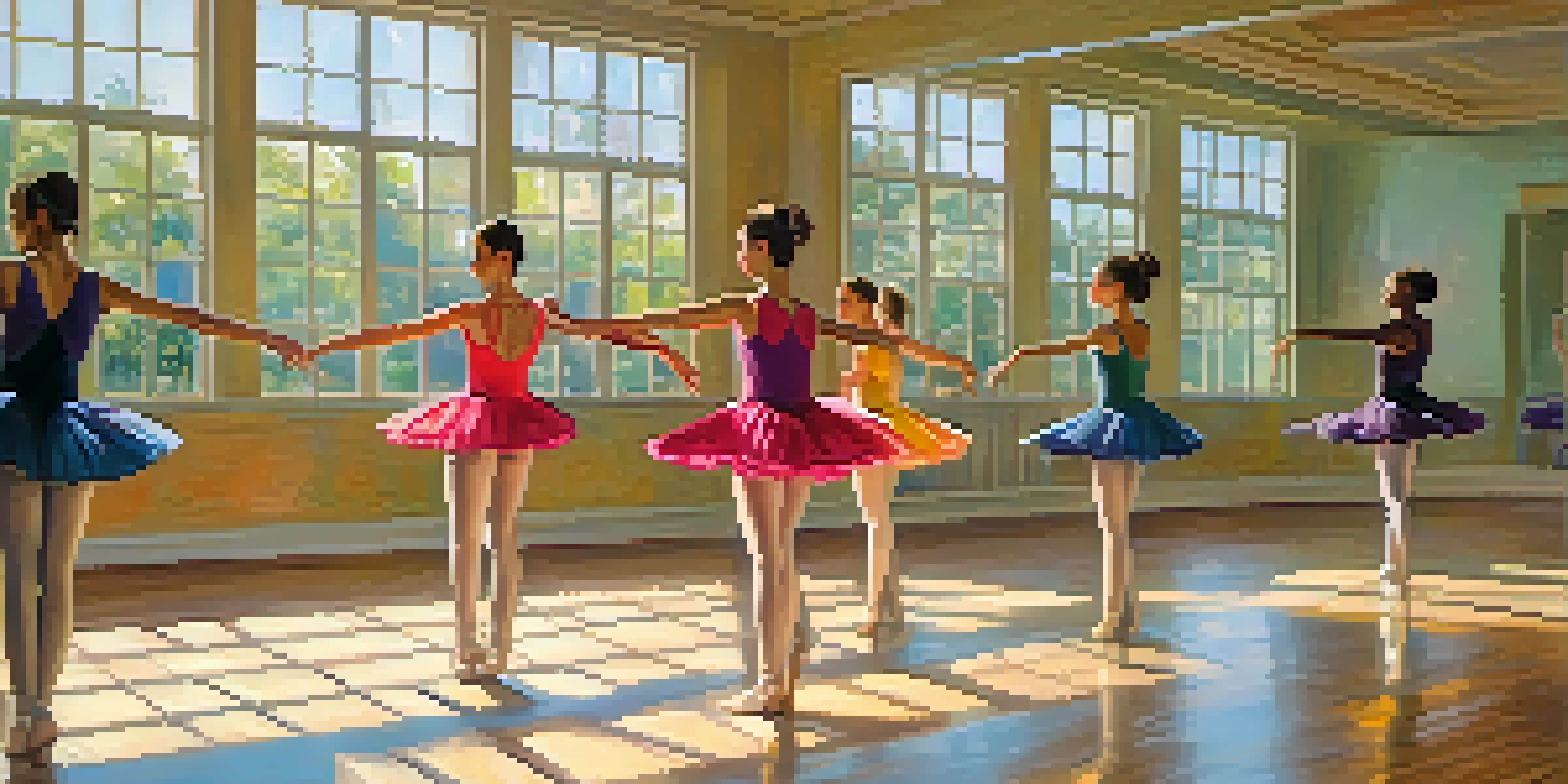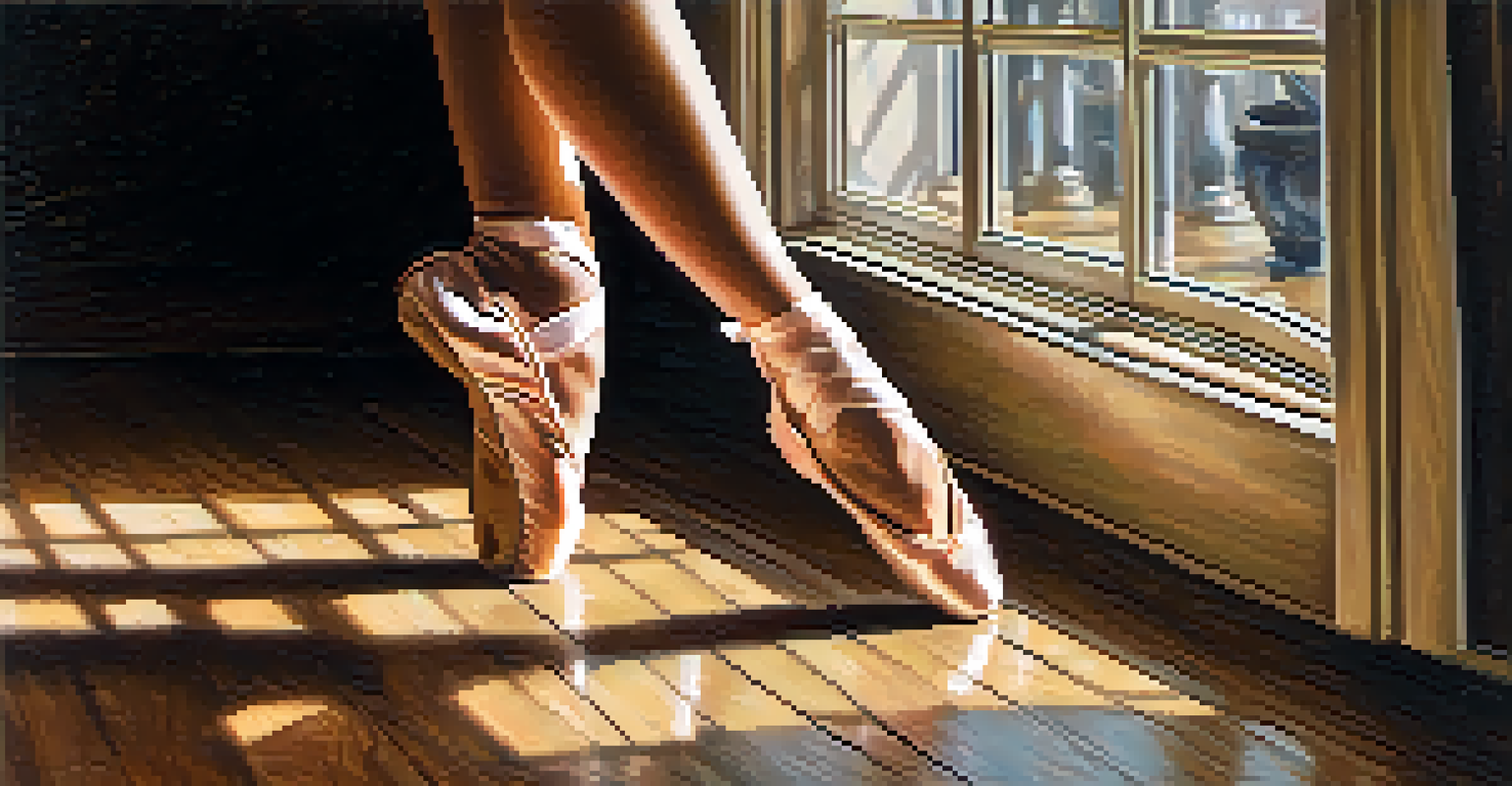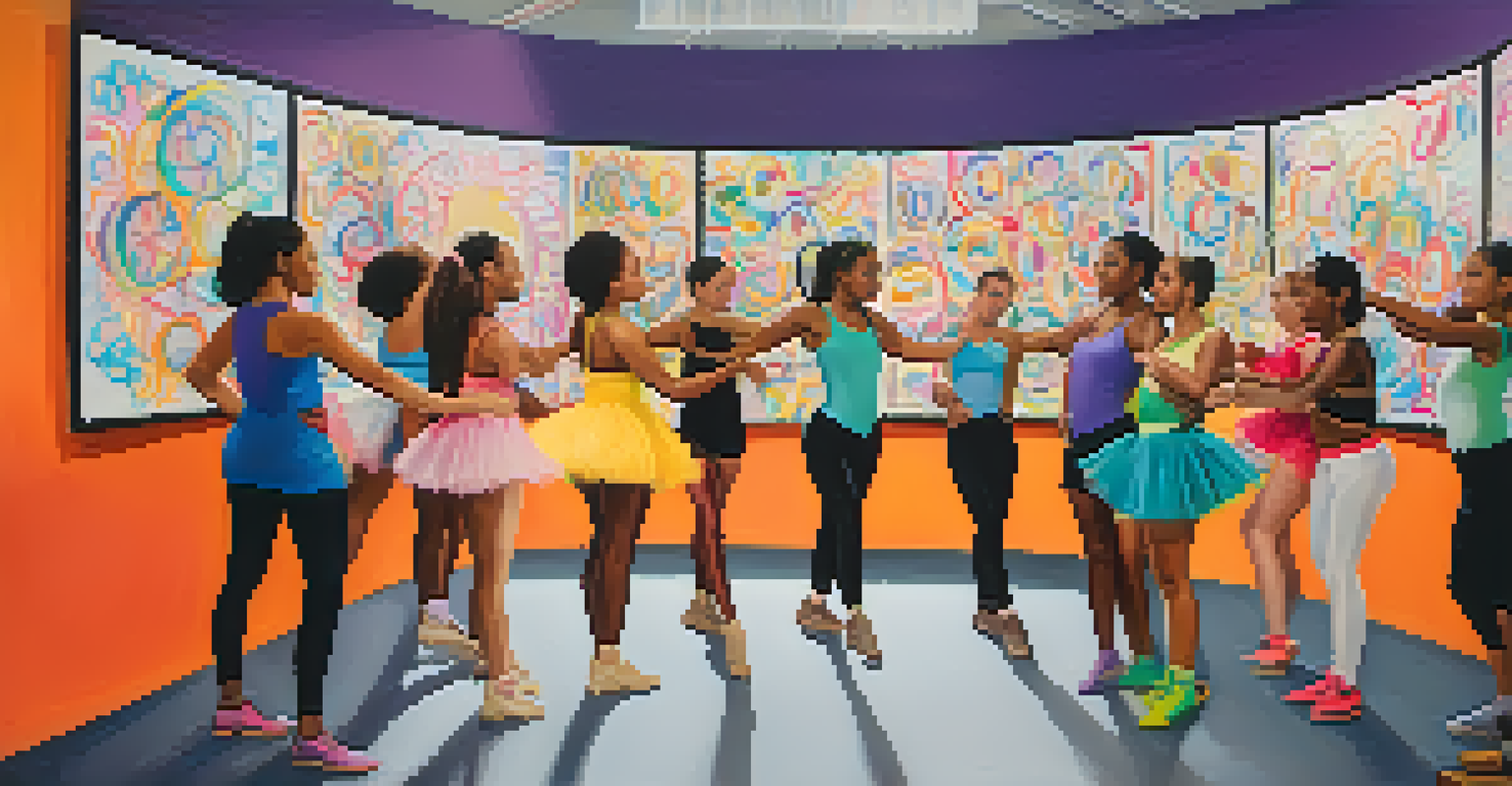The Psychological Impact of Performance Anxiety on Dancers

Understanding Performance Anxiety in Dancers
Performance anxiety is a common experience among dancers, characterized by intense fear or apprehension before performing. This anxiety often stems from a desire to meet high expectations, both self-imposed and from others, such as instructors or audiences. For many dancers, the pressure to deliver a flawless performance can feel overwhelming, leading to a cycle of stress and worry.
Anxiety is like a rocking chair. It gives you something to do but gets you nowhere.
Dancers may experience physical symptoms like increased heart rate, sweating, and shaky hands, which can further hinder their ability to perform. It's important to recognize that these feelings are not unique; many performers across various disciplines face similar challenges. Understanding that performance anxiety is a shared experience can help dancers feel less isolated in their struggles.
Ultimately, acknowledging performance anxiety is the first step toward managing it effectively. By normalizing these feelings, dancers can begin to explore coping strategies that work for them, thus fostering a healthier relationship with their art.
The Cognitive Effects of Performance Anxiety
When dancers experience performance anxiety, their cognitive processes can become significantly affected. This might manifest as negative self-talk or intrusive thoughts that distract from the actual performance. Instead of focusing on the choreography, dancers may find themselves worrying about potential mistakes or how they are perceived by the audience.

This mental barrage can lead to a decrease in confidence, making it even more challenging to execute movements with precision. Over time, these negative thought patterns can become ingrained, creating a self-fulfilling prophecy where dancers feel they cannot perform well. The more they dwell on past failures or anticipated mistakes, the more paralyzed they may feel in future performances.
Understanding Performance Anxiety
Performance anxiety is a common challenge for dancers, driven by the pressure to meet high expectations.
By addressing these cognitive distortions, dancers can work towards reframing their thoughts. Techniques such as mindfulness and positive visualization can help combat negative thinking, allowing dancers to focus on their skills and abilities rather than their fears.
Emotional Consequences of Anxiety for Dancers
The emotional toll of performance anxiety can be profound, often leading to feelings of inadequacy and frustration. Dancers might grapple with anxiety before, during, and after performances, which can impact their overall enjoyment of dance. Over time, this stress can result in burnout, making it essential to find ways to cope with these feelings.
The greatest weapon against stress is our ability to choose one thought over another.
Moreover, the pressure to perform can lead to a disconnect between a dancer's passion for their art and their ability to express it. When anxiety overshadows the joy of dancing, it can create a vicious cycle where the dancer feels less fulfilled. This emotional imbalance can diminish their motivation to continue pursuing dance as a career or hobby.
On the flip side, acknowledging and addressing these emotional challenges can lead to growth. Many dancers find that sharing their experiences with peers or mentors helps foster a supportive community, encouraging resilience and emotional well-being.
Physical Symptoms Linked to Performance Anxiety
Performance anxiety doesn’t just impact the mind; it also manifests physically. Dancers may experience symptoms such as muscle tension, fatigue, and even gastrointestinal issues, making it difficult to perform at their best. These physical reactions can create a feedback loop, where anxiety leads to physical discomfort, which in turn exacerbates anxiety.
For instance, a dancer might feel their muscles tighten before a performance, which can affect their range of motion and fluidity. If they become aware of this discomfort, it can lead to further anxiety about not delivering a strong performance. This cycle can hinder not only their dance quality but also their overall health and well-being.
Coping Strategies for Dancers
Effective techniques like deep breathing and supportive rituals can help dancers manage their performance anxiety.
Recognizing and addressing these physical symptoms is crucial. Techniques such as proper warm-ups, breathing exercises, and physical therapy can help dancers manage their anxiety and improve their physical readiness for performances.
Coping Strategies for Managing Performance Anxiety
Effective coping strategies are essential for dancers dealing with performance anxiety. Techniques such as deep breathing, visualization, and progressive muscle relaxation can help calm nerves before stepping onto the stage. These methods allow dancers to center themselves and focus on the present moment rather than their worries.
Additionally, establishing pre-performance rituals can create a sense of routine and familiarity. Whether it’s listening to a favorite song, doing a specific warm-up, or engaging in positive affirmations, these rituals can help ease anxiety and boost confidence. Dancers often find that having a set routine fosters a sense of control over their performance experience.
Moreover, seeking support from coaches, peers, or mental health professionals can provide valuable insights and encouragement. Learning to communicate feelings of anxiety can help dancers feel less alone, fostering a supportive environment that promotes mental resilience.
The Role of Support Systems in Alleviating Anxiety
Support systems play a crucial role in helping dancers navigate performance anxiety. Friends, family, and mentors can provide encouragement and understanding, allowing dancers to feel more secure in their abilities. By sharing their experiences with trusted individuals, dancers can alleviate feelings of isolation and shame associated with their anxiety.
Dance communities, whether in studios or online, often foster a sense of camaraderie. When dancers openly discuss their struggles with performance anxiety, it normalizes these feelings and encourages collective growth. This shared understanding can lead to stronger bonds and a more supportive atmosphere for all involved.
Importance of Support Systems
Having a strong support network is crucial for dancers to alleviate feelings of isolation and enhance their resilience.
Ultimately, having a robust support system can empower dancers to confront their fears head-on. This support not only helps them manage anxiety but also reinforces their passion for dance, reminding them of the joy that brought them to the stage in the first place.
Long-Term Effects of Performance Anxiety on Dancers
Performance anxiety can have long-term implications for dancers if left unaddressed. Chronic anxiety may lead to a decline in performance quality, which can affect a dancer's opportunities and career prospects. Over time, this can foster a sense of disillusionment, where dancers question their passion and commitment to their craft.
Additionally, persistent anxiety can contribute to mental health issues such as depression or burnout. This emotional toll can create a disconnect between the dancer and their love for the art form, potentially leading to a withdrawal from dance altogether. It’s crucial to recognize these signs early and take proactive steps to address anxiety before it escalates.

Fortunately, with the right coping strategies and support, many dancers can overcome these challenges. By prioritizing their mental health and seeking help when necessary, dancers can find a balance that allows them to thrive both on and off the stage.